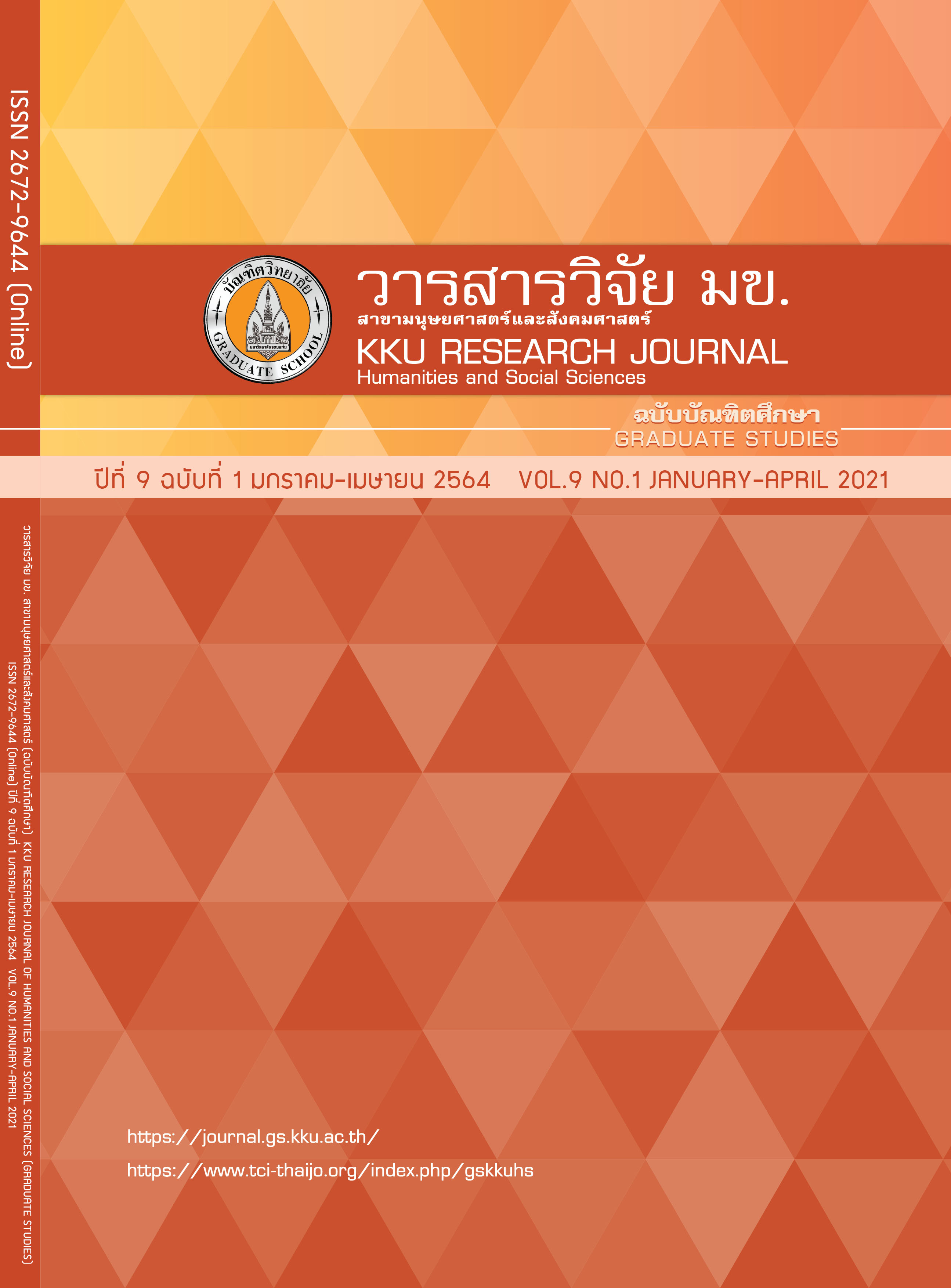Value Addition of Organic Products: A Case Study of Jaruwan Garden, Karasin Province
Keywords:
Value addition, Organic products, Organic gardenAbstract
The objective of this research was to study the context and approach value addition of organic products: a case study of Jaruwan Garden, Karasin Province. The authors collection data during the year 2018 using a case study approach, and collected data in-depth interviews with owner Jaruwan Park, employees and related networks. The research instruments used semi-structure interview forms. Credibility checking using triangulation technique consisting of 3 techniques which are researchers triangulation, datasets triangulation, and methods triangulation. The data was analyzed using statistical software packages, in terms of open coding, then linking the axial coding and selective coding the key variables leading to added value for organic products. The research found that the value addition cycle of organic products there are 4 main elements: 1) the king’s philosophy 2) social network 3) transformation and 4) sharing. All elements are key to the success of sustainable value addition of organic products.
References
Department of Internal Trade of Thailand. Organic products different from general products [Internet]. 2017 [updated 2017 May 12; cited 2018 Apr 10]. Available from: http://www.organicnaturalexpo.com/ introduction.html
GreenNet. Overview of the situation of Thailand organic agriculture [Internet]. 2016 [updated 2016 Feb 1; cited 2018 Apr 10]. Available from: http://www.greennet.or.th/article/411
Posttoday. Commerce pushed the sales of organic products in 2017 to grow by 10% [Internet]. 2017 [updated 2017 May 5; cited 2018 Apr 12]. Available from: https://www.posttoday.com/economy/493389
Winit T. Jaruwan garden business plan report. 2nd ed. Karasin: [n.p.]; 2018.
Creswell JW. Qualitative inquiry and research design: Choosing among five traditions. Thousand Oaks,CA: Sage; 1998.
Stake RE, Denzin NK, Lincoln YS. Handbook of qualitative research. 2nd ed. Thousand Oaks, CA: Sage; 2000.
Chai P. Science and art of quality research. 5th ed. Bangkok: Amarin Printing and Publishing; 2011.
The Chaipattana Foundation. New theory [Internet]. 2017 [updated 2017 Feb 25; cited 2018 Mar 19]. Available from: https://www.chaipat.or.th/concept-and-theory-development/new-theory.html
Organic Farm. New theory agriculture [Internet]. 2016 [updated 2016 Nov 9; cited 2018 Mar 19]. Available from: https://www.organicfarmthailand.com/the-new-theory-of-agriculture/
Tipphachartyothin P. Quality control: The important of consistency. Pro world J. 2014; 19(110): 91-6.
Nilson BH, Solomon A, Bjorck L, Akerstrom B. Protein L from Peptostreptococcus magnusbinds to the kappa light chain variable domain. JBC. 1992; 267(4): 2234-9.
Samerjai C. The small business management. Bangkok: SE-Education; 2005.
Office of the National Organic Development Board. The 1st national organic agriculture development strategy plan 2008-2011 and the national organic farming development plan [Internet]. 2008 [updated 2008 Jan 18; cited 2018 Mar 22]. Available from: https://drive.google.com/file/d/0BwM7RRNXrRHoMG1EamQ1MTA2UW8/edit
Organic Agriculture Certification Thailand. How are organic agriculture different [Internet]. 2017 [updated 2017 Mar 9; cited 2018 Mar 22]. Available from: http://actorganic-cert.or.th/th/actsurvey2017/
Patton MQ. Qualitative evaluation and research methods. 2nd ed. Newbury Park, CA: Sage; 1990.
Strauss A, Corbin J. Basic of qualitative research. Thousand Oaks, CA: Sage; 1998.
Park T-Y, Cho S-H, Seo J-H. A compulsive buying cause: A qualitative analysis by the grounded theory method. Contemp Fam Ther. 2006; 28(3): 239-49.
Maxwell JA. Qualitative Research Design: An interactive approach. Thousand Oaks: Sage; 1996.
Tawan H. Guide to product development to organic agriculture. Chiang Mai: Santipab Pack-Print; 2015.
Thanitta P, Panamas T. Participation of farmers in Sampran model. Agricultural Sci J. 2018; 49(2): 179-92.
Siripong T, Nirintana B. Agricultural product development and consumer behavior. VRU J. 2019; 14(1): 111-24.
Katesuda S, Kanitta S, Banjarata J. Approaches to develop food security in the organic communities Luang Neua Sub-district, Doi-Saket District, Chiang Mai. Journal of Agri. 2018; 35(3): 64-73.
Prerapha T. Influence of marketing strategies and buyers’ lifestyles on post-purchase evaluation of organic products in Thailand [DBA thesis]. Bangkok: Dhurakij Pundit University; 2013.




